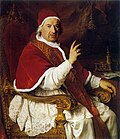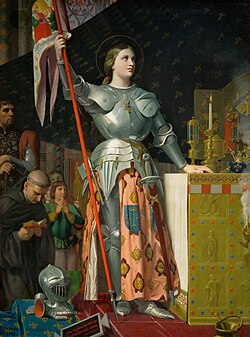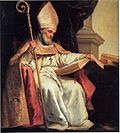Portal:Catholic Church
Introduction The Catholic Church (Latin: Ecclesia Catholica), also known as the Roman Catholic Church, is the largest Christian church, with 1.27 to 1.41 billion baptized Catholics worldwide as of 2025. It is among the world's oldest and largest international institutions and has played a prominent role in the history and development of Western civilization. The church consists of 24 sui iuris (autonomous) churches, including the Latin Church and 23 Eastern Catholic Churches, which comprise almost 3,500 dioceses and eparchies around the world, each overseen by one or more bishops. The pope, who is the bishop of Rome, is the chief pastor of the church. The core beliefs of Catholicism are found in the Nicene Creed. The Catholic Church teaches that it is the one, holy, catholic and apostolic church founded by Jesus Christ in his Great Commission, that its bishops are the successors of Christ's apostles, and that the pope is the successor of Saint Peter, upon whom primacy was conferred by Jesus Christ. It maintains that it practises the original Christian faith taught by the apostles, preserving the faith infallibly through scripture and sacred tradition as authentically interpreted through the magisterium or teaching office of the church. The Roman Rite and others of the Latin Church, the Eastern Catholic liturgies, and communities and societies such as mendicant orders, enclosed monastic orders, third orders and voluntary charitable lay associations reflect a variety of theological and spiritual emphases in the church. Of its seven sacraments, the Eucharist is the principal one, celebrated liturgically in the Mass. The church teaches that through consecration by a priest, the sacrificial bread and wine become the body and blood of Christ. The Virgin Mary is venerated as the Mother of God, and Queen of Heaven; she is honoured in dogmas, such as that of her immaculate conception, perpetual virginity and assumption into heaven, and devotions. Catholic social teaching emphasizes voluntary support for the sick, the poor, and the afflicted through the corporal and spiritual works of mercy. The Catholic Church operates tens of thousands of Catholic schools, universities and colleges, hospitals, and orphanages around the world, and is the largest non-government provider of education and health care in the world. Among its other social services are numerous charitable and humanitarian organizations. (Full article...) Selected article
 Vix Pervenit: On Usury and Other Dishonest Profit was an encyclical, promulgated by Pope Benedict XIV on November 1, 1745, which condemned the practice of charging interest on loans as usury. Because the encyclical was addressed to the Bishops of Italy, it is generally not considered ex cathedra. The Holy Office applied the encyclical to the whole of the Roman Catholic Church on July 29, 1836, during the reign of Pope Gregory XVI. The encyclical codified Church teachings which date back to early ecumenical councils, at a time when scholastic philosophy (which did not regard money as a productive input) was increasingly coming into conflict with capitalism. Though never formally retracted, the encyclical's relevance has faded as the Church retreated from actively enforcing its social teachings in the financial sphere, and as the practice of charging interest on loans became almost universally accepted—legally and ethically.
Selected image
 Credit: Acarpentier The Tomb of Brother André. When Brother André died, a million people filed before his coffin. His heart is preserved in a monstrance in the oratory. It was stolen in March 1973, but recovered in December 1974. He was beatified by Pope John Paul II on May 23, 1982. The miracle cited in the beatification was the healing in 1958 of Giuseppe Carlo Audino, who suffered from cancer. Selected biography
 Pope Benedict XVI (Latin: Benedictus PP. XVI; German Benedikt XVI.; Italian: Benedetto XVI, born Joseph Alois Ratzinger on 16 April 1927) was the 265th Pope, the spiritual head of the Catholic Church, and as such, Sovereign of the Vatican City State, until his resignation was effective, on 28 February 2013. He was elected on 19 April 2005 in a papal conclave, celebrated his papal inauguration mass on 24 April 2005, and took possession of his cathedral, the Basilica of St. John Lateran, on 7 May 2005. Pope Benedict XVI has both German and Vatican citizenship. He succeeded Pope John Paul II, who died on 2 April 2005 (and with whom he had worked before the Sede vacante). Benedict XVI was also the Bishop of Rome. Benedict XVI is a well-known Catholic theologian and a prolific author, a defender of traditional Catholic doctrine and values.
Did you know...
Related portalsFeast Day of May 30
Selected quote

News
SubcategoriesTopics
The Holy Bible:
Particular churches (grouped by liturgical rite):
Things you can do
External resourcesWikiProjectsAssociated WikimediaThe following Wikimedia Foundation sister projects provide more on this subject:
Discover Wikipedia using portals |


































